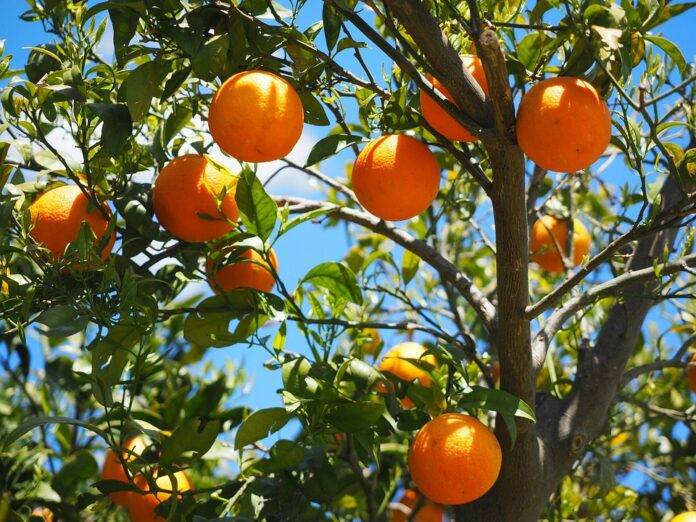Introduction
The global orange market is a dynamic sector characterized by significant production and export activities. Oranges are not only a popular fruit but also an important agricultural commodity, contributing to the economies of many countries. This report delves into the top ten orange-exporting countries, providing insights into their production volumes, financial statistics, and market dynamics.
1. Brazil
Brazil stands as the largest exporter of oranges globally, dominating the market with its vast citrus orchards. In 2022, Brazil exported approximately 1.4 million metric tons of oranges, generating around $1.1 billion in revenue. The primary markets for Brazilian oranges include the United States, Europe, and the Middle East.
The state of São Paulo is the epicenter of orange production in Brazil, accounting for nearly 80% of the country’s total output. The favorable climate and advanced agricultural practices contribute to Brazil’s ability to produce high-quality oranges, particularly the Valencia variety, which is favored for juice production.
2. United States
The United States ranks second in orange exports, with Florida being the leading state for orange production. In 2022, the U.S. exported around 600,000 metric tons of oranges, valued at approximately $700 million. The majority of U.S. orange exports target Canada and various countries in Europe.
The U.S. orange industry is facing challenges, including citrus greening disease, which has affected production levels. However, ongoing research and development efforts aim to combat these issues and sustain the industry.
3. Spain
Spain is a significant player in the orange export market, primarily exporting to other European countries. In 2022, Spain exported around 1.2 million metric tons of oranges, with a revenue generation of approximately $900 million. The Spanish orange varieties, including Navel and Valencia, are highly sought after for their flavor and quality.
The region of Valencia is particularly renowned for its orange production, with the Mediterranean climate providing ideal growing conditions. Spain’s strategic location allows for efficient distribution to neighboring countries, enhancing its export potential.
4. South Africa
South Africa has established itself as a key exporter of oranges, particularly in the southern hemisphere. In 2022, South Africa exported about 600,000 metric tons of oranges, generating around $500 million. The primary export destinations include the European Union, the Middle East, and Asia.
The Western Cape and Limpopo provinces are the leading orange-producing regions in South Africa. The country’s focus on high-quality production and adherence to international standards have bolstered its reputation in the global market.
5. Egypt
Egypt has emerged as a prominent orange exporter, particularly in recent years. In 2022, Egypt exported approximately 1.5 million metric tons of oranges, with a revenue of about $800 million. The country mainly exports to Europe and the Middle East, capitalizing on its favorable climate and irrigation practices.
The Navel and Valencia varieties are the most commonly produced oranges in Egypt. The government has also invested in improving agricultural practices, enhancing the overall quality and competitiveness of Egyptian oranges.
6. Turkey
Turkey is another significant exporter of oranges, exporting around 400,000 metric tons in 2022 and generating approximately $300 million in revenue. The main markets for Turkish oranges include Russia, the Middle East, and Europe.
The Mediterranean coastal region is the primary area for orange cultivation in Turkey. The country’s diverse climate allows for the production of various citrus fruits, with oranges being a vital component of its agricultural exports.
7. Mexico
Mexico is known for its diverse agricultural exports, including oranges. In 2022, Mexico exported about 350,000 metric tons of oranges, achieving a revenue of approximately $250 million. The United States is the largest market for Mexican oranges, benefiting from close geographical proximity.
The citrus-growing regions in Mexico, including Veracruz and Tamaulipas, are known for producing high-quality oranges. The country has been focusing on improving its export quality to compete effectively in the global market.
8. Israel
Israel is recognized for its high-quality citrus exports, including oranges. In 2022, Israel exported roughly 200,000 metric tons of oranges, generating around $150 million. The primary markets for Israeli oranges are Europe and Russia.
Israeli orange production benefits from advanced agricultural technologies and innovative farming practices. The country is known for producing high-quality varieties, particularly the Jaffa orange, which has a strong market presence.
9. Argentina
Argentina has a smaller yet notable presence in the orange export market. In 2022, the country exported approximately 150,000 metric tons of oranges, with a revenue of about $100 million. The main export destinations include Brazil and European countries.
The Tucumán and Salta provinces are the primary regions for orange cultivation in Argentina. The country is focusing on improving its export capabilities and enhancing the quality of its citrus fruits.
10. China
China, while primarily known for its vast domestic consumption of oranges, also engages in orange exports. In 2022, China exported around 100,000 metric tons of oranges, generating approximately $80 million in revenue. The primary markets include Southeast Asia and Japan.
China’s orange production is heavily concentrated in the provinces of Guangdong and Jiangxi. The government has been promoting the export of agricultural products, including oranges, to diversify its economy.
Conclusion
The global orange export market is characterized by a diverse range of countries, each contributing uniquely to the industry. Brazil, the United States, and Spain lead the market, driven by their favorable climates, advanced agricultural practices, and strong international demand. Meanwhile, countries like Egypt and South Africa are emerging as significant players, enhancing their export capabilities through investment and innovation.
As consumer preferences continue to evolve, the orange exporting countries must adapt to changing market dynamics, ensuring quality and sustainability in their production processes. This will be crucial in maintaining their competitive edge in the global market. The future of the orange export industry looks promising, with ongoing improvements in agricultural practices and international trade relations.



